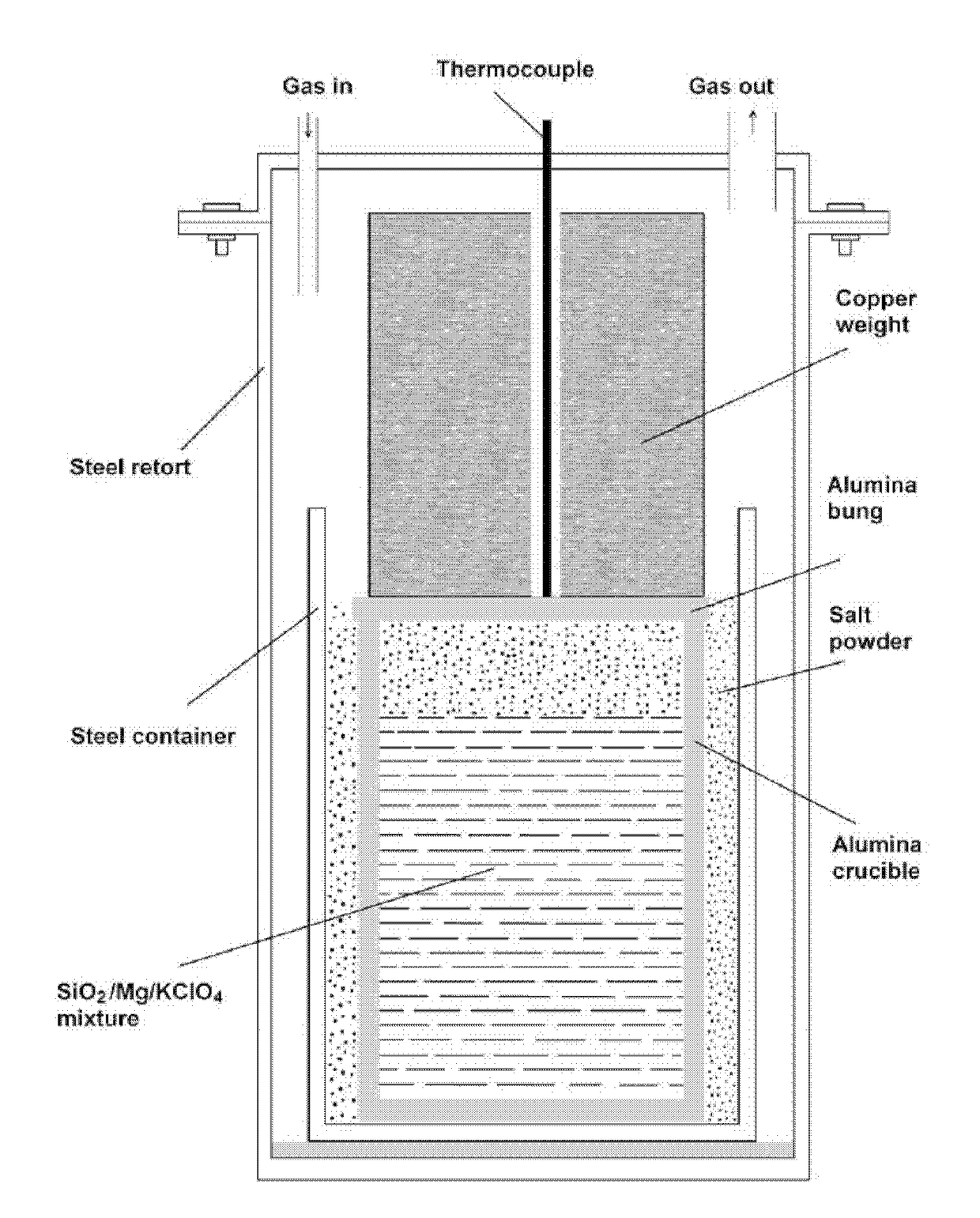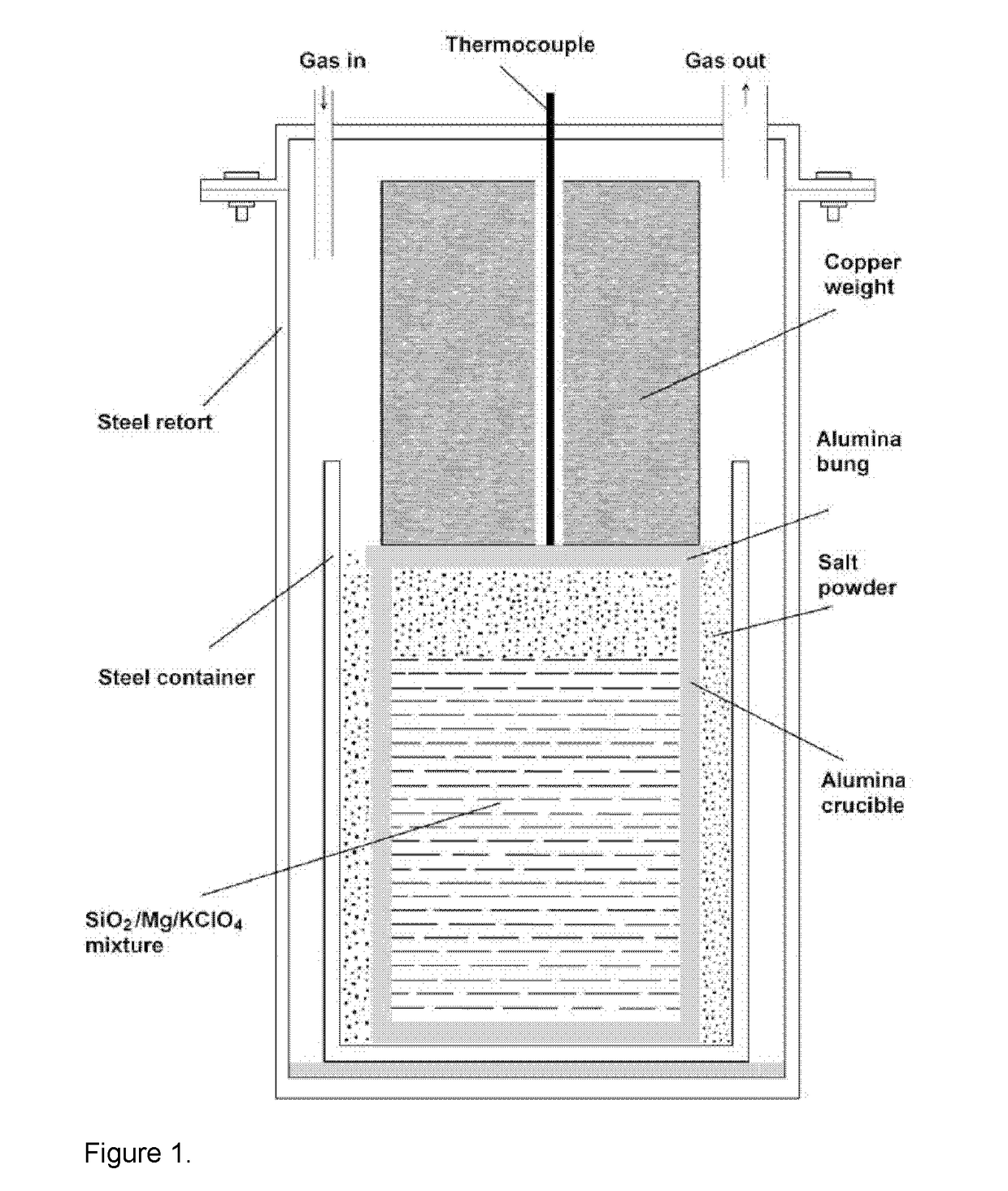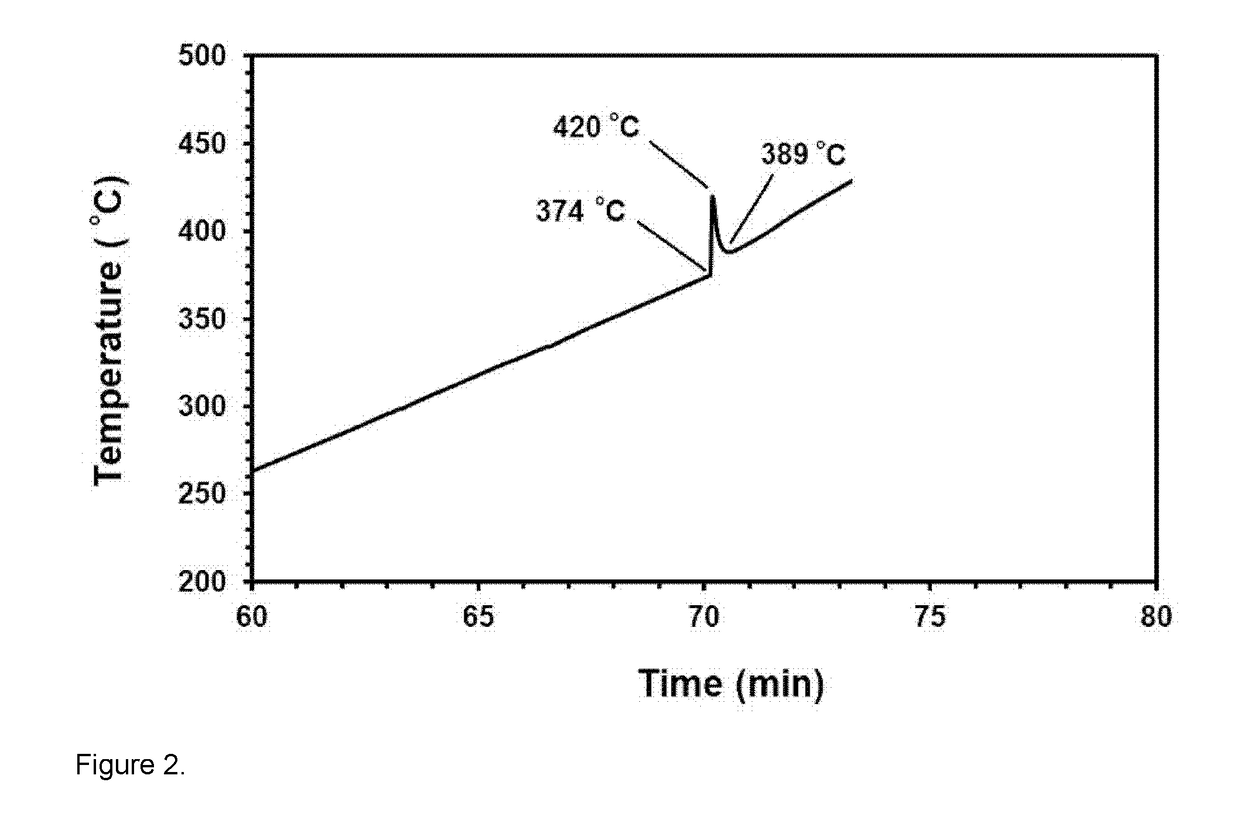Reduction of metal/semi-metal oxides
a technology of metal/semi-metal oxides and reduction of metal/semi-metal oxides, which is applied in the direction of magnesia, chemistry apparatus and processes, and silicon compounds, etc., can solve the problems of microcracks or pulverization, oxide requires substantial energy, and adversely affects the environmen
- Summary
- Abstract
- Description
- Claims
- Application Information
AI Technical Summary
Benefits of technology
Problems solved by technology
Method used
Image
Examples
example 2
[0078]12.82 g SiO2 (Sigma Aldrich, 0.5-10 μm, 80% 1-5 μm), 16.44 g Mg chips (Sigma Aldrich 254118, 4-30 mesh) and 3.01 g KClO4 powder (Sigma Aldrich 241830) was mixed and the mixture was placed in an alumina crucible.
[0079]The mixture was heated to 530 deg C., and then the reactor was allowed to cool down. Then, the material inside the crucible was aqueously leached with distilled water, to remove NaCl which might be mixed with the product, and filtered. The XRD result of the material obtained is shown in FIG. 9b indicating the presence of Mg2Si,MgO and Mg(OH)2. No SiO2 peak could be identified in the XRD pattern demonstrating the complete reduction of SiO2 particles. SEM morphology of this material is shown in FIG. 10. As seen, the material consists of a dense agglomeration of fine particles. This morphology suggests that the composite powder can be directly used for making Mg2Si—MgO composites.
[0080]The filtrate was dried at 30 deg C., and washed with H2SO4 (95%) and HNO3 (70%). F...
example 3
[0082]A sample of sand was collected from the beach of Winterton-On-Sea (a village in the English county of Norfolk). FIG. 12 exhibits an SEM micrograph of the powder showing the SiO2 particles have sizes from 200 to about 600 μm. XRD analysis was performed on the as collected sample, and the result is shown in FIG. 13a, demonstrating the beach sand collected is pure quartz SiO2.
[0083]37 g sand of the same sample was dried at 100° C. and mixed with 51 g Mg chips (Sigma Aldrich 254118, 4-30 mesh) and 4.0 g KClO4 powder (Sigma Aldrich 241830). The mixture was placed in an alumina crucible and the powder mixture was further pounded by means of a mallet. The extra space left in the alumina crucible above the reaction mixture was filled with NaCl salt. The crucible was then sealed by means of a ceramic bung, and placed in a second alumina crucible and the gap between the two alumina crucibles until the bung level was filled with additional NaCl. Then a cylindrical copper weight was place...
example 4
[0086]A sample of sand from the same origin as Example 3 was ball milled for 72 h by a low energy rotating ball milling device using a plastic container and alumina balls with the ball:sand ratio of 10:1. The SEM morphology of the milled powder is shown in FIG. 14. This figure shows the sand particle sizes reduced to mainly less than 100 μm. Moreover it is clear that each particle in the milled sand is in fact an agglomeration of much smaller particles. The XRD result of the ball milled sand is shown in FIG. 15b. The XRD pattern of the as collected SiO2 is also shown for comparison. It is seen that the ball milled sand consists of pure SiO2 in quartz structure.
[0087]37 g ball milled sample was dried at 100° C. and mixed with 51 g Mg chips (Sigma Aldrich 254118, 4-30 mesh) and 4.1 g KClO4 powder (Sigma Aldrich 241830). The mixture was placed in an alumina crucible and the powder mixture was further pounded by means of a mallet. The extra space left in the alumina crucible above the r...
PUM
| Property | Measurement | Unit |
|---|---|---|
| temperature | aaaaa | aaaaa |
| temperature | aaaaa | aaaaa |
| temperature | aaaaa | aaaaa |
Abstract
Description
Claims
Application Information
 Login to View More
Login to View More - R&D
- Intellectual Property
- Life Sciences
- Materials
- Tech Scout
- Unparalleled Data Quality
- Higher Quality Content
- 60% Fewer Hallucinations
Browse by: Latest US Patents, China's latest patents, Technical Efficacy Thesaurus, Application Domain, Technology Topic, Popular Technical Reports.
© 2025 PatSnap. All rights reserved.Legal|Privacy policy|Modern Slavery Act Transparency Statement|Sitemap|About US| Contact US: help@patsnap.com



